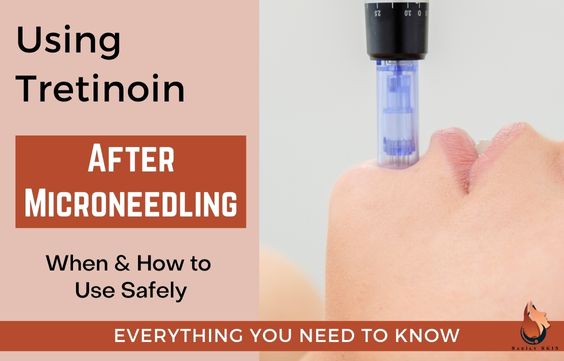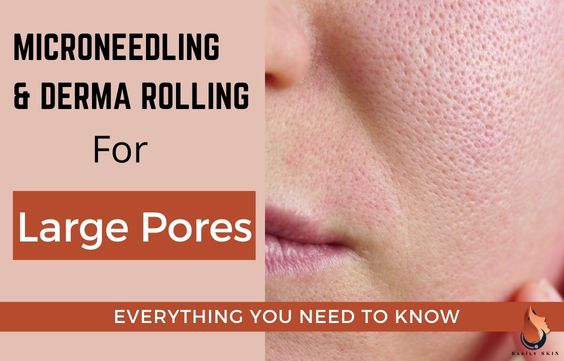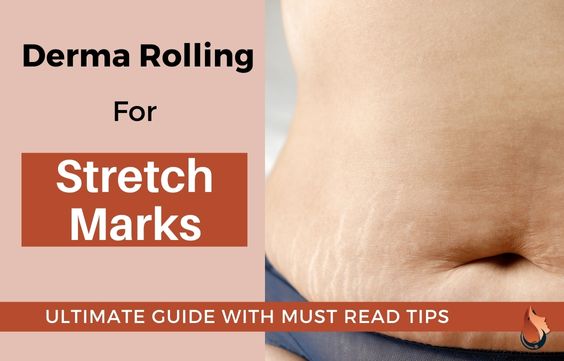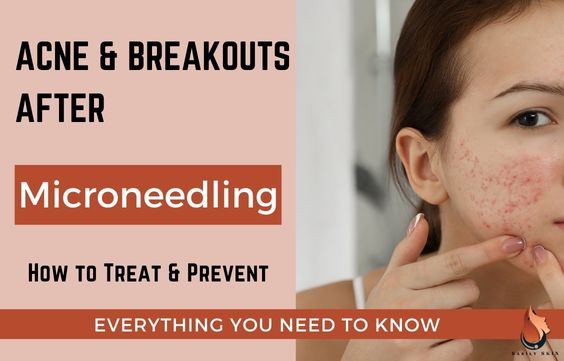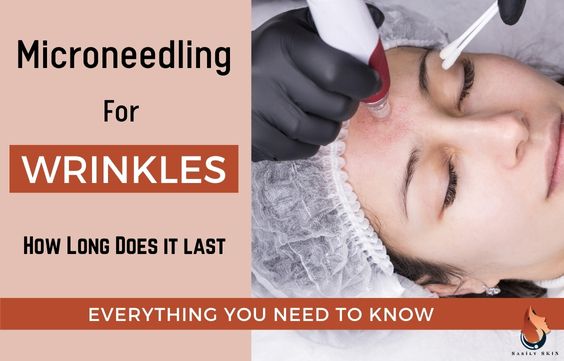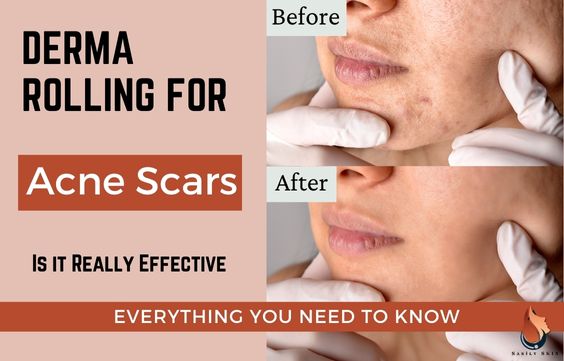When & How to Wear Makeup After Microneedling – Must Read
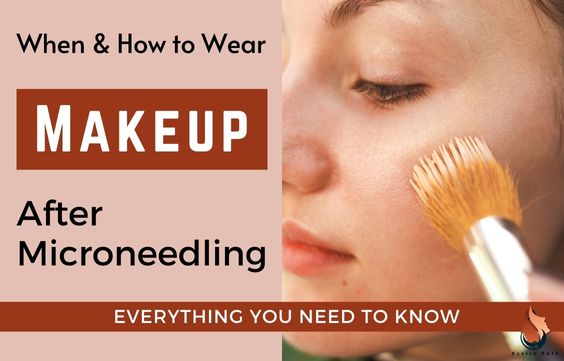
Wearing makeup after microneedling is a common concern- especially for those of us who have scars and other features we want to cover up.
Or, for those of us who simply enjoy getting dressed up.
Either way, there are restrictions when it comes to wearing makeup after microneedling. In this article I will cover:
- When you can use makeup again
- How you can go about using your makeup to prevent irritation and skin damage
- What harmful ingredients to look out for in your products
- What products are safe to use on sensitive skin and in general
Can you wear makeup immediately after Microneedling
No. You should not apply makeup immediately after microneedling.
If you do use makeup immediately after microneedling you greatly increase the chances of having a breakout.
Related Article – How & When to Safely Wash Face after Microneedling
How long should you wait to use makeup after Microneedling
Ideally, you should wait for 72 hours (3 days) before applying makeup after a microneedling session.
Waiting a few days will give the skin time to heal. The skin will also be less irritable, so your makeup products have less of a chance to cause any adverse reactions.
However, after 3 days have passed, you may gradually start to reintroduce your makeup products into your routine.
Why You Need to Avoid Makeup Immediately After Microneedling
Microneedling creates little holes (micro-channels) in your skin. These holes help to increase the absorption of certain serums.
But these micro channels also can help to absorb harsh chemicals and aid the growth of bacteria.
And most times, makeup contains:
- Harsh chemicals that can be harmful to your skin.
- makeup and makeup tools also have a wide range of bacteria on the surface that will transfer onto and into the skin.
Unfortunately, this will cause breakouts and infection, which will scar and damage your skin, as well as slow down healing.
So you need to wait for your skin to heal before using makeup.
Related Article – Acne & Breakouts After Microneedling – How to Treat
Can you use makeup immediately after derma rolling
No. You should not use makeup immediately after derma rolling.
The concept of the process of creating little holes in the skin is the same in derma rolling as in microneedling.
However, the difference is that the holes do not go as deep.
But, makeup chemicals and bacteria can still get into the skin and cause a bad reaction if we rush to use makeup too quickly.
How long should you wait to use makeup after derma rolling
You should wait at least 48-72 hours (2-3 days) after derma rolling before you start applying makeup to your skin.
Just like with microneedling, your skin needs time to heal and re-seal its protective barrier after the derma rolling process.
This will take a few hours to a few days and it is best to wait before applying makeup products on your skin.
After 2-3 days, you may gradually start to use your products again.
How to safely start using makeup after microneedling or derma rolling?
After microneedling or derma rolling, you should gradually start reintroducing makeup products back into your routine.
So as to not overload your skin, I recommend starting with small amounts of light products for a few hours.
Then, you can gradually work your way up to wear more products for longer times until your routine is back to normal.
For example:
- On the first day, maybe you can start with some tinted moisturizer.
- On the second day, you could add a little concealer.
- On the third day, you can either increase the amount of concealer or you can add a small amount of foundation.
- After that, you can gradually start to increase the amount of product that you wear until you reach your normal amount.
You can also start by wearing these products for a few hours and gradually increase as you need them, or until you reach a full day.
Tips on What to do when Wearing Makeup After Microneedling
1- Make sure that your makeup tools are clean.
Dirty makeup tools increase the chances of a breakout
2- Prep and prime your face well
This includes moisturizer, sunscreen and a good primer so that there is a base between your skin and the makeup.
3- Use makeup and prepping products that will not clog your pores.
Clogged pores will cause acne and breakouts.
4- Try to use products that are unscented
Fragrance can sometimes cause irritation.
5- Start with light products
And then build your way up to heavier make-up.
6- Start by using makeup for a few hours
And then work your way up until you can wear it for a full day.
7- Always wash off your makeup when you get home
Or before you go to bed never sleep with makeup on your skin.
8- Do not over scrub or exfoliate your skin
Instead, use a gentle but effective makeup remover and face wash to remove your makeup. Then use a toner to remove any residue and balance your skin’s pH.
9- Use your skin care products in the right order
This helps your skin to remain healthy for as long as possible. Healthy skin gives a smooth and safe base for makeup.
VIDEO: 1-5 DAY HEALING POST PROFESSIONAL MICRONEEDLING
Types of Makeup to Avoid After Microneedling
It is generally safe to go back to your regular makeup products a few days after microneedling.
However, in an effort to protect our skin from toxic chemicals which can damage skin, there are a few ingredients and things we should look out for and avoid when choosing makeup and cosmetics.
The FDA uses the term “cosmetics” to not only refer to makeup, but also to things like sunscreen, moisturizer, cleansers, face washes, shampoos, toothpaste and a variety of other skincare and body care items.
Read your product labels
Researchers have linked many chemical components included on product labels to health concerns.
Therefore, knowing which compounds to avoid will help you decrease or restrict your exposure.
Harmful makeup ingredients you should avoid after microneedling
Ingredients that are regulated by the FDA that you should try to avoid include:
| Ingredient | Use in Product(s) | Health Concern |
| Phthalates | Phthalates can be found in perfume, nail polish, hair spray, cleansers, and lotions. | When used excessively, researchers believe that this compound is carcinogenic (cancer-causing) & that it disrupts hormone function. |
| Parabens | One of the most common preservative agents. They can be found in everything from cleaning products to makeup and skincare products. | Propylparaben & Iosbutylparaben are the parabens to really keep an eye out for. They are both associated with a risk of cancers. |
| Sodium Laureth Sulfate (SLES) and Sodium Lauryl Sulfate (SLS) | These are common ingredients in many cream-based cosmetics, such as foundation and concealer, as well as face washes, soaps, shampoos and other hair products. | SLES is very irritating & has been linked to disrupting the endocrine system. Similarly, SLS can also cause irritation and allergic reactions. They are also both suspected of links to cancer causers. |
| Diethanolamine (DEA) & Triethanolamine (TEA) | They can be found in many skin and hair products. | Research has shown that these ingredients are carcinogenic (linked to causing cancer). Many countries have banned them from being used in products. |
| Triclosan | The FDA actually banned this ingredient in soaps. However, it’s still allowed in other products, such as toothpaste, face wash, deodorant, etc. It’s used as an antibacterial agent, preservative, or antiperspirant. | Triclosan is considered to be a hormone disruptor and irritant. |
| Synthetic fragrance | The term “fragrance” is a euphemism for potentially harmful substances.This is due to the fact that businesses are permitted to disguise their proprietary mixes under this term. As a result, when you see “fragrance” listed as an ingredient, you have no idea what’s in it. | Synthetic (and even natural) perfumes can irritate the skin and trigger allergic responses. Furthermore, there may be even more dangerous substances hidden under the label, such as phthalates. |
| Chemical UV filters like Octinoxate and Oxybenzone | These compounds are used in chemical formulations of sunscreens to help filter UV rays. | They are known to be harmful to human health and as such, many professionals recommend skipping these for mineral sunscreens instead. |
| Formaldehyde & Formaldehyde Releasers | These are usually found in nail polish. Though it is not found in many other cosmetics, it can be given off as a gas from other ingredients like Diazolidinyl Urea, which can be found in cosmetics, skin care products, shampoos, bubble baths, baby wipes, and household detergents. | Formaldehyde is a known carcinogen and hormone disruptor. |
| Certain Polyethylene (PEGs) like PEG-10 Laurate | Like parabens, PEGs are commonly used in a variety of products. You may see them in hair dye, moisturizers, and creamy makeup products.PEGs are actually a group of ingredients. A common one is PEG-10 Laurate. | They are known to be disruptive to hormone-health and function. And, they can be irritating in some products. |
| Butylated hydroxyanisole (BHA) and Butylated Hydroxytoluene (BHT) | In cosmetics, they are used as a fragrance and preservatives. They can be found in sunscreen, lip, hair, and antiperspirant products, as well as any product with fragrance. | These are know to be carcinogenic and may also affect your hormones. |
| Benzalkonium Chloride | This is an organic salt that acts as a surfactant in cosmetics. It’s commonly found in sunscreens and moisturizers. | This can cause severe irritation in the eyes, skin, and respiratory system as well as allergy triggers, especially if you have sensitive skin or are prone to allergies and allergic reactions. |
| Hydroquinone | This is a bleaching agent that is found in skin whitening products. | Hydroquinone is linked to organ toxicity and cancer. It is better to use Vitamin C, or Niacinamide to whiten your skin. |
| Methylisothiazolinone & Methylchloroisothiazolinone | These are usually used as preservatives in shampoos, conditioners and body washes. | They have been linked to skin sensitivity, irritation and allergic reactions. |
| Triclocarban | Triclocarban is used as an antimicrobial agent, and it’s also a preservative. Because of its function, it’s commonly used in cleansing products like face wash, hand soap, and body wash. | Unfortunately, this ingredient is harmful to the reproductive system as well as aquatic life. |
| Lead | Despite the danger of lead toxicity, 61% of lipsticks contain lead, including some of the major store brands. | There is no safe level of lead exposure – even a little bit can be dangerous. It’s a neurotoxin which is linked to learning, language and behavioral problems. It also causes reproductive and hormonal issues in both men and women. |
FDA- Restricted Ingredients
Ingredients that have been prohibited by the FDA include:
- Chlorofluorocarbon propellants
- Chloroform
- Halogenated salicylanilides
- Hexachlorophene
- Mercury
- Methylene chloride
- Prohibited cattle materials (usually fat or tallow)
- Vinyl chloride
- Zirconium-containing complexes
- Bithionol
I understand that this is a large and daunting list.
How are you going to stay away from all of these chemicals?
It’s not easy, but you can make it a bit easier by doing your homework, reading labels, and purchasing cosmetics from a reputable and transparent brand.
FDA Information on Ingredients, Brands, and Products
The FDA has an archive of information that can help you in your research. Click on the following links to read:
FDA Authority Over Cosmetics: How Cosmetics Are Not FDA-Approved, but Are FDA-Regulated | FDA
I encourage you to check your products for any indication of FDA testing and/or approval when purchasing makeup and other cosmetics.
Related articles:
Microneedling Healing Stages & Aftercare Tips to Heal Fast
How & When to Safely Wash Face after Microneedling
Acne & Breakouts After Microneedling – How to Treat
Sources:
How to Take Care of Your Skin After Microneedling
How Soon Can I Wear Makeup After Microneedling?
Can I Wear Makeup after Derma Rolling | Havana Skin Clinic
Toxic Makeup: What It Is and How to Avoid It

